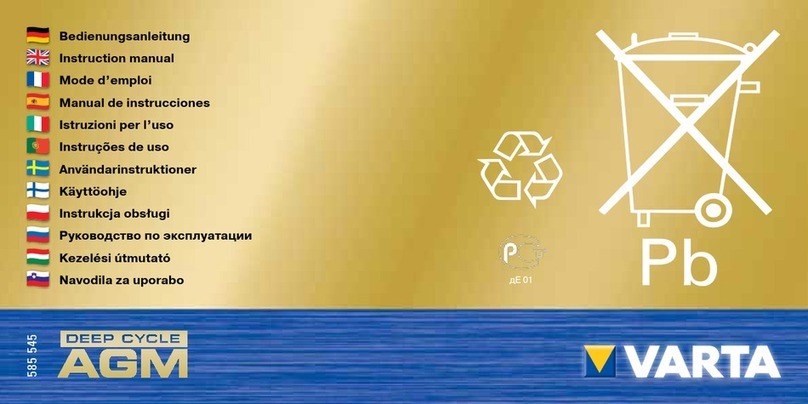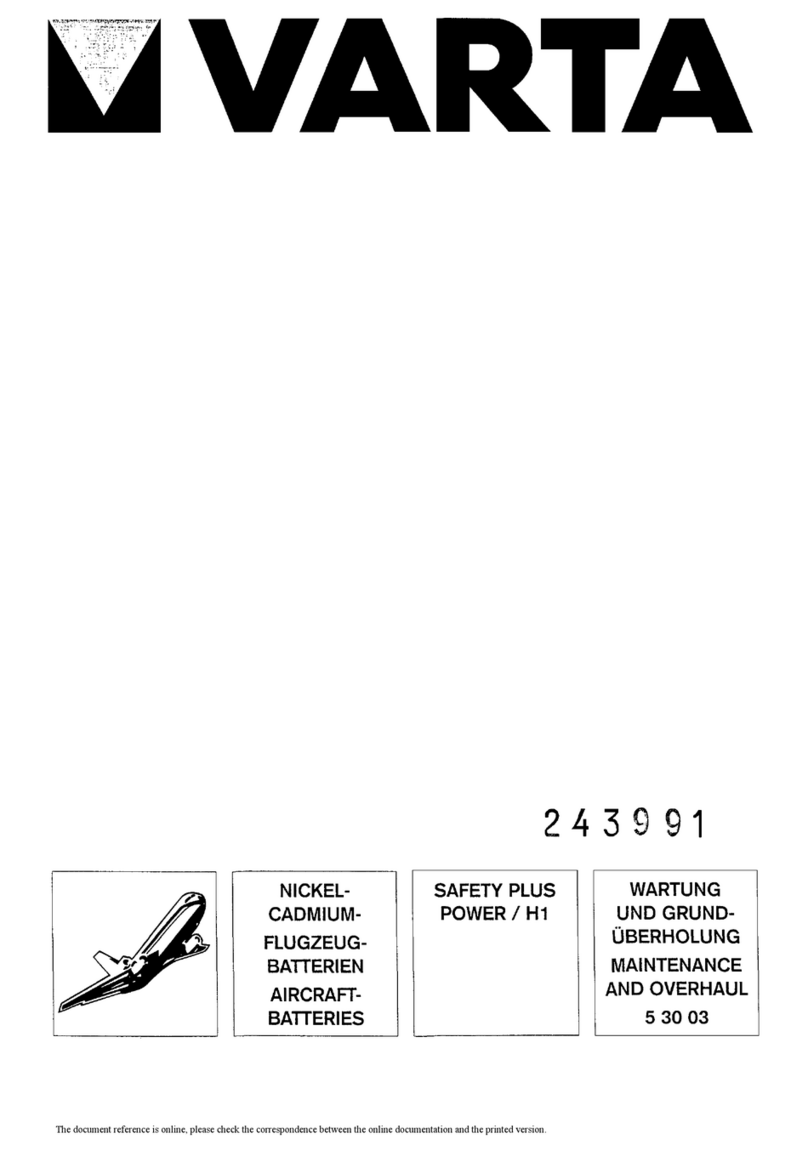
COINPOWER | 5
1.1 Definitions
Unless otherwise stated, specified values are valid for
operation at room temperature 20 ºC ± 2 ºC.
Specific Data
The gravimetric energy density of the Li-Ion Coin Power
series depends on battery size, and is in the range of
130 – 190 Wh / kg. Volumetric energy density is in the
range of 380 – 520 Wh / l.
Voltage Definitions
Open Circuit Voltage (OCV):
Equilibrium potential 3.0 V to 4.3 V on average,
dependent on temperature, storage duration and state of
charge. Nominal Voltage of Li-Ion cells is 3.7 V
End of Discharge Voltage (EOD):
The voltage at the end of discharging is nominally 3.0 V
per cell, but depend on discharge rate and temperature.
End of Charge Voltage: (EOC)
Terminal voltage after charge is 4.3V.
Capacity Definitions
The capacity C of a cell is defined by the discharge
current I and the discharge time
t: C = I · t
I = constant discharge current
t = duration from the beginning of discharge until the
end of discharge voltage is reached
Nominal Capacity
The nominal capacity C denotes the energy amount
in mAh (milli-Ampère hours) that the cell can deliver
at the 5 hour discharge rate (0.2 CA). The reference
temperature is +20 ºC ± 2 ºC, and the final discharge
voltage is 3.0 V.
Typical Capacity
The typical capacity is the average capacity at a
discharge rate of 0.1 CA to a final discharge voltage
of 3.0 V.
Available Capacity
Li-Ion cells deliver their nominal capacity at 0.2CA. This
assumes that charging and discharging is carried out
as recommended. Factors which affect the available
capacity are:
• Rate of discharge
• End of discharge voltage
• Ambient temperature
• State of charge
• Age
• Cycle history
At higher than nominal discharge rates the available
capacity is reduced.
Current Definitions
Charge and discharge rates are given as multiples of the
nominal capacity (C) in Amperes (A) with the term CA.
Example:
Nominal capacity C = 1000 mAh
0.1 CA = 100 mA, 1 CA = 1000 mA
Nominal Discharge Current
The nominal discharge current of a Li-Ion cell is the
5hour discharge current (0.2 CA).
It is the current at which the nominal capacity of a cell
is discharged in 5 hours.
COINPOWER | GENERAL INFORMATION






























